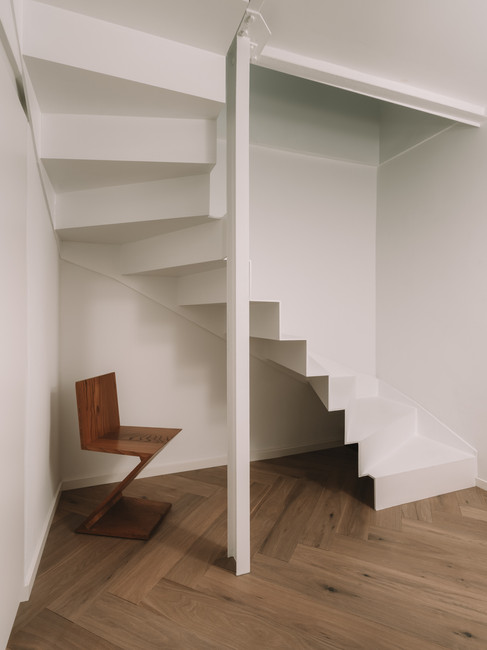Vaust Studio — Minimalist Design in Berlin, Between Silence and Resistance
- AMPM
- Jun 20
- 3 min read
Updated: Oct 24
In Berlin, Vaust Studio champions an aesthetics of restraint. No ornamental speech, no surface effects: the trio designs objects like silent thresholds, at the intersection of furniture, architecture, and ritual. In a world saturated with images and stories, their raw minimalism becomes a radical counterpoint: a way of resisting quietly.
Entering Vaust
Nothing distracts. No fluid lines, no charming silhouettes. In Vaust’s Berlin studio, light filters in slowly, softened by the raw texture of the walls. The floor feels heavier, somehow. A few objects are placed like markers, anchoring the space. They don’t seek attention or interpretation. They simply exist: massive, dense, silent.
Founded in Berlin by Sebastian Horn, Florian Blöchinger and Lukas Kral, Vaust Studio operates at the crossroads of architecture, object design, and sculptural research. Their approach isn’t over-theorized: it manifests in the forms themselves, in the voids, the absences. A true voice of minimalist design in Berlin.
In an interview with Design Anthology, they state:
“We create objects that impose a slow pace. Objects that exist before they exist for someone.”
The Weight of Form
Every piece feels like an excavated thought. Tables, consoles, plinths: there’s no decorative gesture, no verbose function. These are blocks, archetypes. They evoke thresholds more than destinations. A table resembles a pedestal; a bench, a monument.
Their relationship with materials refuses softening. Black concrete, raw steel, dense stone: each texture retains its tension. Mold marks, matte reflections, sharp edges: nothing is concealed. It’s not about glorifying the material, but about letting it be. A form of material honesty.
The line is so pure it feels on the verge of vanishing. Yet this sparseness is never fragile: it is heavy with intention. It holds weight. A quiet philosophy that embodies minimalist design in Berlin.
A Grammar of Silence
In Vaust’s world, the object itself does not speak: it’s the void it carves around it that resonates. Silence isn’t emptiness, but syntax. Each piece offers a pause, a breath. Shadow becomes punctuation. A slight shift in volume feels like a sigh.
Their tension-filled minimalism echoes Japanese architecture or the purity of John Pawson’s work, yet without mimicry. Vaust’s restraint isn’t aesthetic: it’s existential. It’s a state of presence. A matter of equilibrium.
Your gaze slows down. You stop scanning. You observe. You feel. The object transcends function, it becomes a sensory situation.
Quiet Refusal, Radical Presence
Vaust produces little. They publish sparingly. Their communication is pared down to its essence. No branded fiction, no obsessive storytelling. And it’s precisely this absence of explanation that makes the work speak louder.
Their refusal of noise isn’t a marketing stance: it’s coherence. They design objects like one lays foundations: slowly, deliberately, away from the noise.
In their world, producing less is a way of saying more.
A quiet luxury. A rhythm that resists the current.
This is minimalist design in Berlin: deliberate, slow, and deeply present.
What if Resistance Was Silence?
Vaust doesn’t claim activism. They’re not reacting, they’re stepping aside. Just enough for the material to speak. And in that voluntary withdrawal lies a rare kind of posture: that of contained intensity.
Their work doesn’t chase trends. It obeys no algorithm. It belongs to a different temporality: slower, denser, quieter. A refusal to explain that becomes its own stance.
And maybe that’s the most radical form of resistance today: not shouting louder, but silencing the excess. Making space, for what truly lasts.
Credits : https://vaust.studio




























Comments